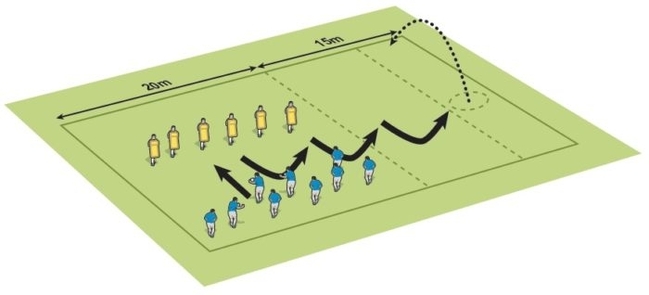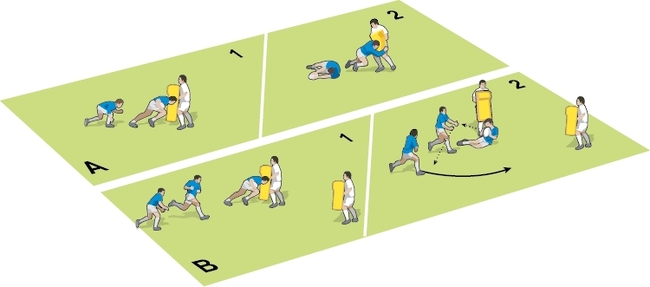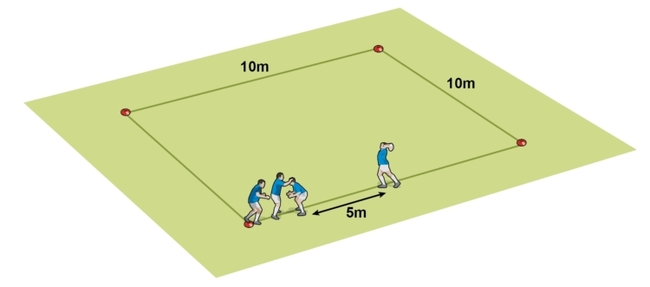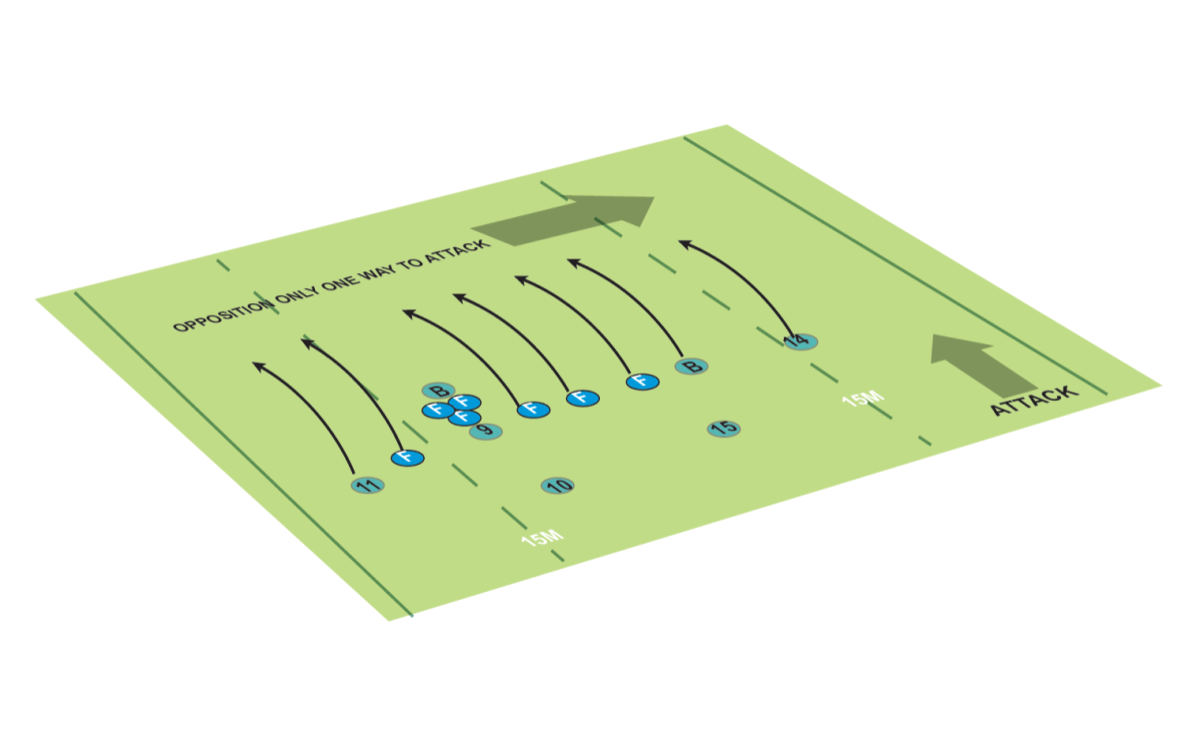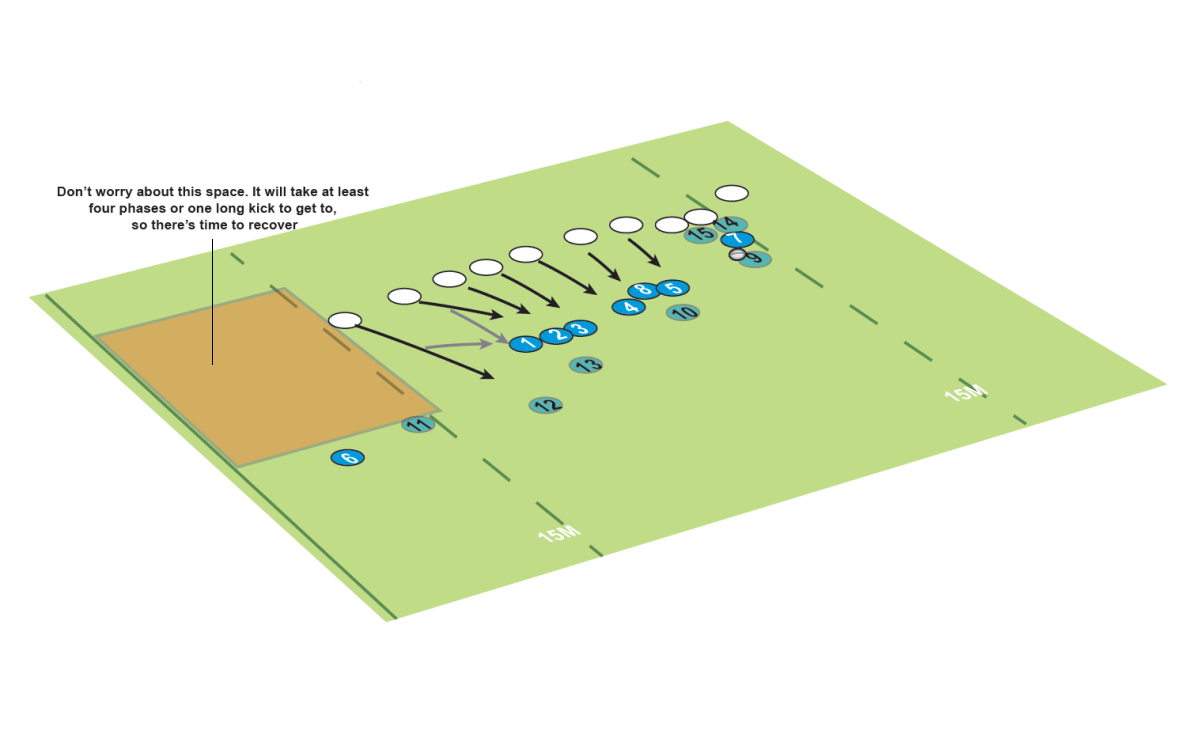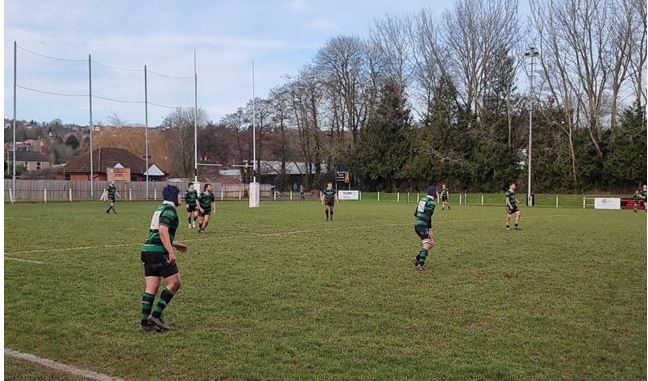Wet-weather rugby: How to thrive in rain
Tips for succeeding when conditions are at their worst.
Playing rugby in the wet is inevitable in both hemispheres, given its role as a winter sport.
We all grow up playing on muddy, wet and windy pitches that can limit a team’s ability to score points.
Here are some top tips from the professional game that you can employ at all levels in order to mitigate the very worst of conditions.
1. Limited phases in own half
If the weather is bad, you are often better off not having the ball and waiting to play from the opposition’s mistakes.
Employing a disciplined kicking game in your half to win the territory battle (meaning the ball is in the opposition half more than yours) will significantly improve your chance of winning the game. In fact, 68% of wet matches are won by the team who succeed in the battle for territory.
Having ‘signposts’ of where to kick from helps employ a good chase line. Try to kick from positions near the 15m lines - kicking into this channel limits the catching team to only one side to attack (see illustration below).
One-pass plays in your half will also limit the chance of handling errors before you set up your kicking plan.
2. Short-side attacks
Utilising the short side, or blindside, is a great tactic to attack and gain metres up the field.
Defences will generally want the attack to play to the longer - or open - side, where a number of passes will have to be completed in tough weather conditions in order to execute to the space.
Instead, attacking in a short 10-15 metre channel limits the risk of multiple passes and can force the same defenders to make multiple tackles, opening up the opportunity to line-break.
Like kicking signposts, if there is a handling error on a short-side attack, you are better positioned to transition into defence with a full line having to defend only one side of the attack.
3. Use an attacking kicking game
Attacking kicks in extremely wet conditions can cause havoc among a defensive back three.
Grubbing the ball on the ground with a disciplined chase and making the opposition have to play the ball will increase the chance of an error or turnover.
In their own 22, teams will often defend with 14 players in the front line; therefore, kicking space in behind the front line is a good area in which to score or try to force an error.
4. Employing an aggressive line speed
One of the best tips in wet-weather rugby is to employ an aggressive line speed defence system that applies pressure on the skill of the opposition.
Defensive width is less of an issue as it will be harder for the attack to get the ball into that space (see illustration below).
Related Files
Therefore, a tight, connected defensive line that keeps coming up after each pass will continuously apply pressure on the opposition and help you gain territory.
5. Breakdown discipline
Discipline at the breakdown is a must in poor weather conditions. Giving away penalties will always lead to a territory loss, usually of 30 metres or more.
Therefore, decision-making on whether to compete at the breakdown is important in defence.
It can be more beneficial to leave the breakdown and have as many defenders on their feet as possible to employ an aggressive line speed defence that pressurises the opposition’s skill level in the wet.
In attack, having players closely connected to support the ball carrier is vital to ensure ball retention and maintain a territory position.
Newsletter Sign Up
Coaches Testimonials

Gerald Kearney, Downtown Las Vegas Soccer Club

Paul Butler, Florida, USA

Rick Shields, Springboro, USA

Tony Green, Pierrefonds Titans, Quebec, Canada
Subscribe Today
Be a more effective, more successful rugby coach
In a recent survey 89% of subscribers said Rugby Coach Weekly makes them more confident, 91% said Rugby Coach Weekly makes them a more effective coach and 93% said Rugby Coach Weekly makes them more inspired.
Get Weekly Inspiration
All the latest techniques and approaches
Rugby Coach Weekly offers proven and easy to use rugby drills, coaching sessions, practice plans, small-sided games, warm-ups, training tips and advice.
We've been at the cutting edge of rugby coaching since we launched in 2005, creating resources for the grassroots youth coach, following best practice from around the world and insights from the professional game.


